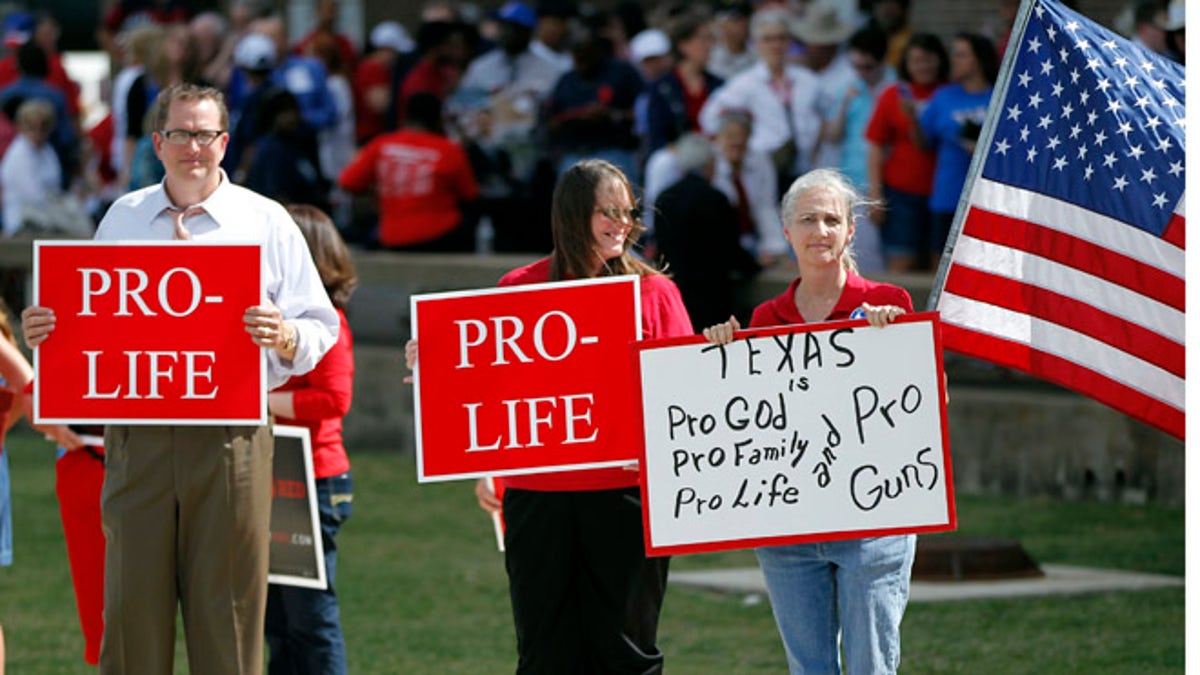
Oct.3 , 2013: Protesters gather outside W.G. Thomas Coliseum in Haltom City, Texas. (Reuters)
Recent and gruesome history has made clear that abortion shops, including those that perform dangerous second and third trimester abortions, have too often operated under inadequate scrutiny and control from state and federal health officials.
Nevertheless, a majority of Supreme Court Justices said Monday in Whole Woman’s Health v. Hellerstedt that the state of Texas could not prove that the regulations passed by the legislature were really there to protect women, since abortions result in few life threatening complications. They compared the procedure of abortion to a colonoscopy or liposuction. As far as sheer numbers and very general similarities, this comparison may be true. But the lawmakers who crafted Texas’ HB 2 were seeking to protect women from an industry that puts profits ahead of the safety of women, and one that is heedless of the significance of the “tissue” they are destroying.
Perhaps nothing was more illuminating in this regard than the 2011 Kermit Gosnell trial in Philadelphia. Gosnell’s “house of horrors” was allowed to operate with impunity for decades. When the center was finally raided by federal law enforcement, it was for the illegal distribution of opioids. What they found were conditions so sordid and tragic that they can barely be believed. The infamous “back alley abortionist” of history was practicing openly on Main Street. Over the years, complaint after complaint had been filed and duly ignored, resulting in the deaths of women and the outright murder of infants. Many of the women who survived his “care” suffered tremendous physical and psychological injury, including perforated wombs and bowels, and were treated with a callous heartlessness that boggles the mind.
It was looking to head off a similar occurrence in Texas that legislators passed a couple of common sense regulations. One was requiring that abortionists have admitting privileges in a hospital within thirty miles of their facility. This would have two safety effects. First, scrutiny by the hospital board ensures that the doctors have the basic requirements needed to receive privileges—such as not having been disciplined by state boards of health and being considered basically competent. Secondly, that a physician who performs an invasive procedure, such as a second or third trimester abortion with all its possible dangerous complications, has the ability to admit and care for his patient when she is hemorrhaging or septic and her life is in danger. This is much safer for the patient than showing up to an E.R. with only a vague idea of what was done to her.
The second regulation was that these centers must meet the same physical plant requirements as other ambulatory surgical facilities. One “reproductive rights” website deceptively characterizes this as requiring them to be “mini-hospitals.” Nothing could be further from the truth. In my medical practice, we do not perform any invasive procedures-- yet our facility meets these requirements. Namely, wide doorways and hallways that allow the passage of a gurney; a ramp to the parking lot to get to a waiting ambulance; plenty of parking so patients in pain do not have to hobble a long distance to their car; sidewalks around the building that are smooth and walkable. Far from a “mini-hospital,” this is only what you would want for yourself, your mother, or your daughter, if she were undergoing an invasive medical procedure of any kind.
The four dependably pro-abortion Justices on the Court and Justice Kennedy decided that HB 2's safeguards would lead to the closure of many abortion shops. And it’s true, it would have. Planned Parenthood offices would have stayed open, as they already adhere to these commonsense regulations. But the centers that endanger women with inadequate facilities and doctors who can’t get admitting privileges in nearby hospitals would have closed. Now thanks to those five Justices, back alley abortion shops are safe. Greed and callousness will run free, and the abortion industry will continue to put avarice and ideology ahead of the safety and well-being of the women whose despair and abandonment drives their businesses and fills their coffers.
